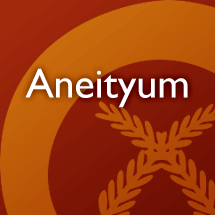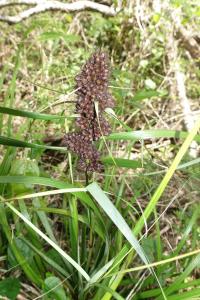Your search for * in food / children has returned 7 entries
custard apple
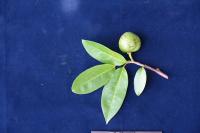
n. tree, 5 m tall (collection: Gregory M. Plunkett #3520)
Example: Children sometimes eat this fruit but it smells bad. Adults do not eat it. An introduced species so there is no local name.
bookmarkincetcanalaeñ
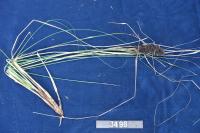
inwae
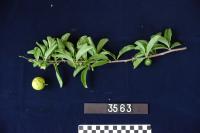
n. tree, 3-4 m tall (collection: Gregory M. Plunkett #3563)
Example: Children like to eat the fruit of this plant. It is said to taste like pineapple/mango. It must be very ripe to be eaten. Peel and discard the skin. The fruit is most sweet when it is on the ground for a few days. Some children eat the seeds of this fruit but it has a strong oily taste--too many cause vomiting and if a person eats 1-2 seeds it can cause diarrhea.
bookmarknakwei
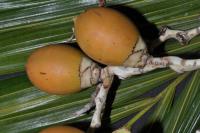
n. large palm, 20 m tall (collection: Gregory M. Plunkett #4080)
Example: 1. Children eat the nut of the ripe fruits. 2. The leaf bases can be used, when tied together, two at a time, to create a bowl from which to drink. 3. In the past, the trunks were used to fashion a hunting spear used in tribal warfare. Further context withheld.
bookmarknikam
![1a. This plant is a "message plant." If a person goes to another village with a leaf of this species in their hand, then people know that someone is coming, and this is reflected in the local name. 1b. Message plant – if you pop by someone’s house and drop leaves there, people know someone has visited them. You can ask neighbors who came by. 2. The fruit is a source of a nut that children love to eat raw. 3. It is known in Bislama as "false mango" [kiyaman mango].](/media/aneityum/pix/GMP_3481_MJB_97-scaled.jpg)
n. tree, 8-10 m tall (collection: Gregory M. Plunkett #3481)
Example: 1a. This plant is a "message plant." If a person goes to another village with a leaf of this species in their hand, then people know that someone is coming, and this is reflected in the local name. 1b. Message plant – if you pop by someone’s house and drop leaves there, people know someone has visited them. You can ask neighbors who came by. 2. The fruit is a source of a nut that children love to eat raw. 3. It is known in Bislama as "false mango" [kiyaman mango].
bookmarknikam
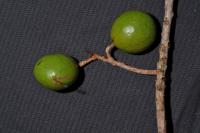
n. large tree, 18 m tall (collection: Gregory M. Plunkett #4076)
Example: 1. The name means "I come". This plant is used to convey messages. When a branch of this plant is left at the house of a person it indicates someone had visited them and they were not there. 2. Children eat the nut of the ripe (yellow) fruits.
bookmark